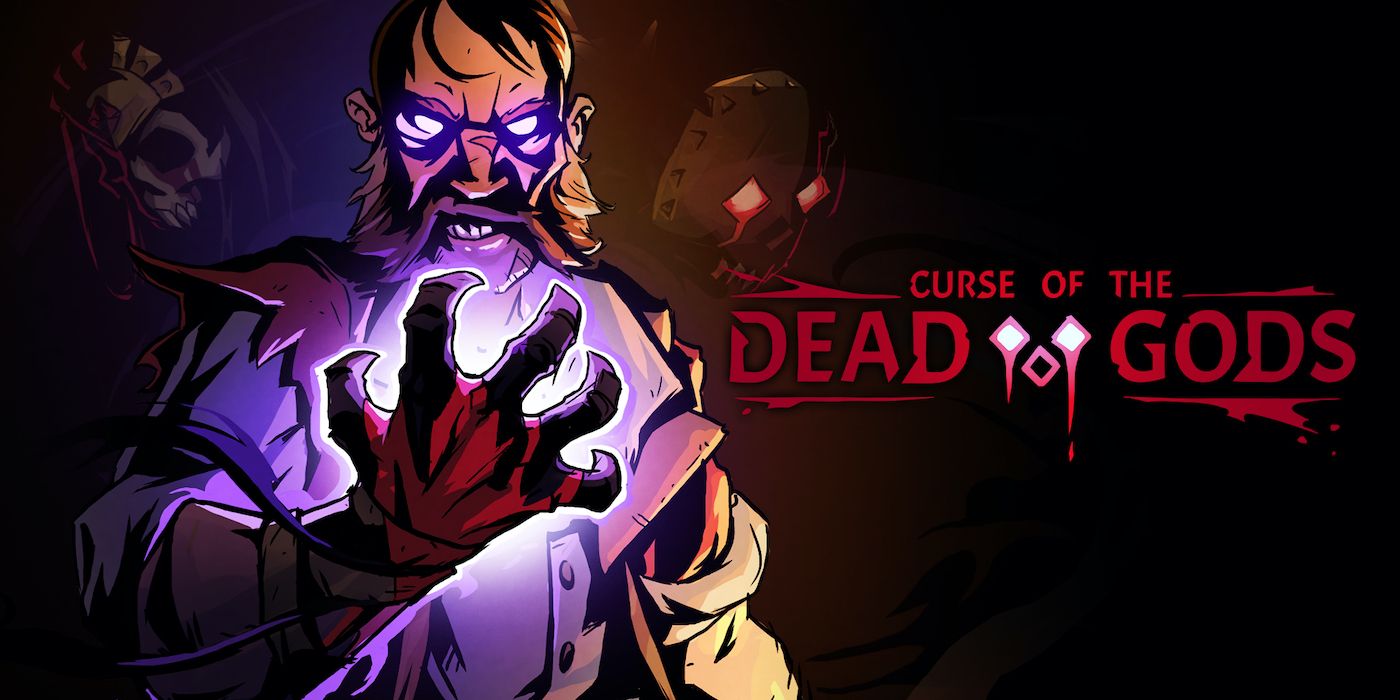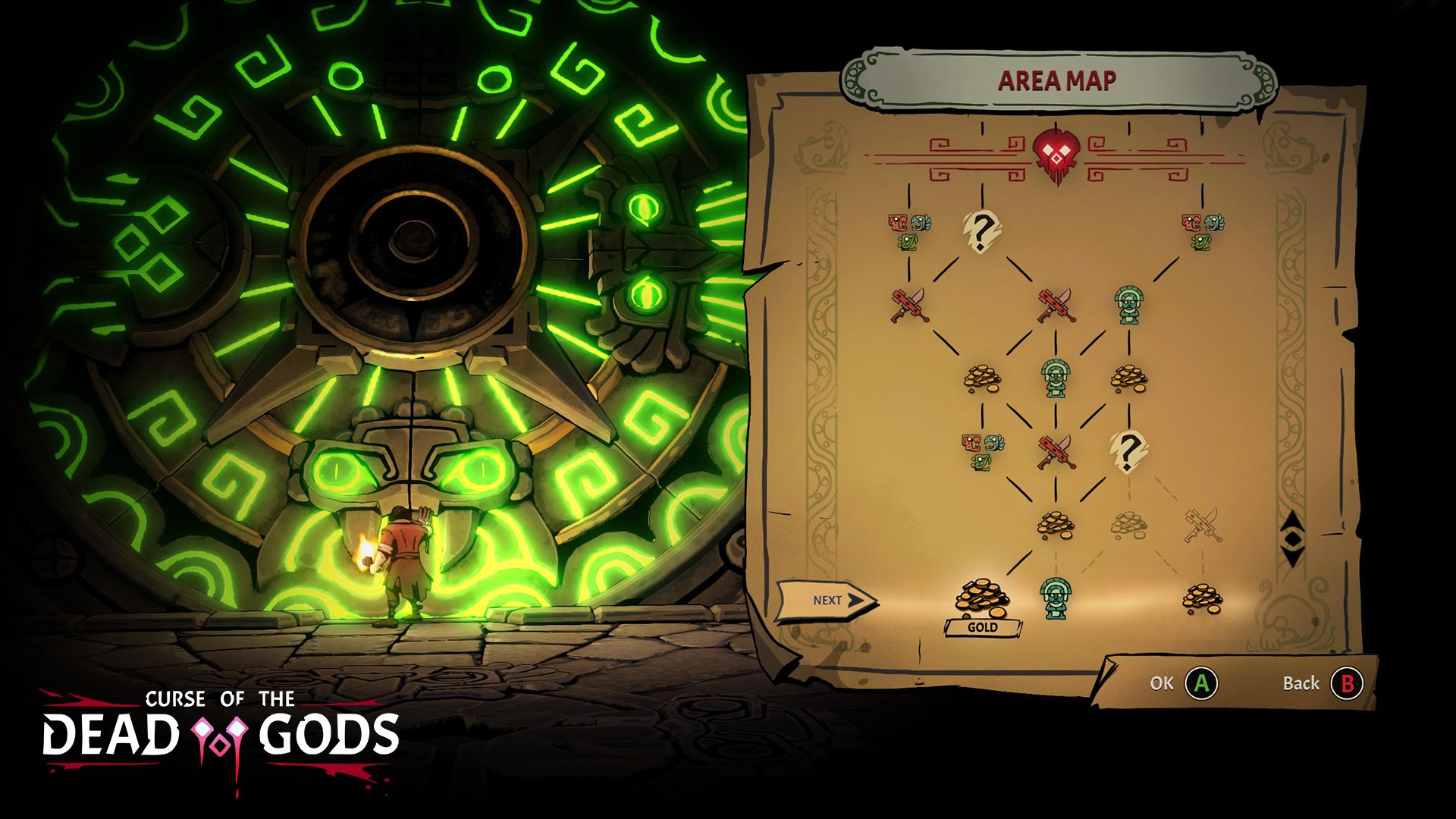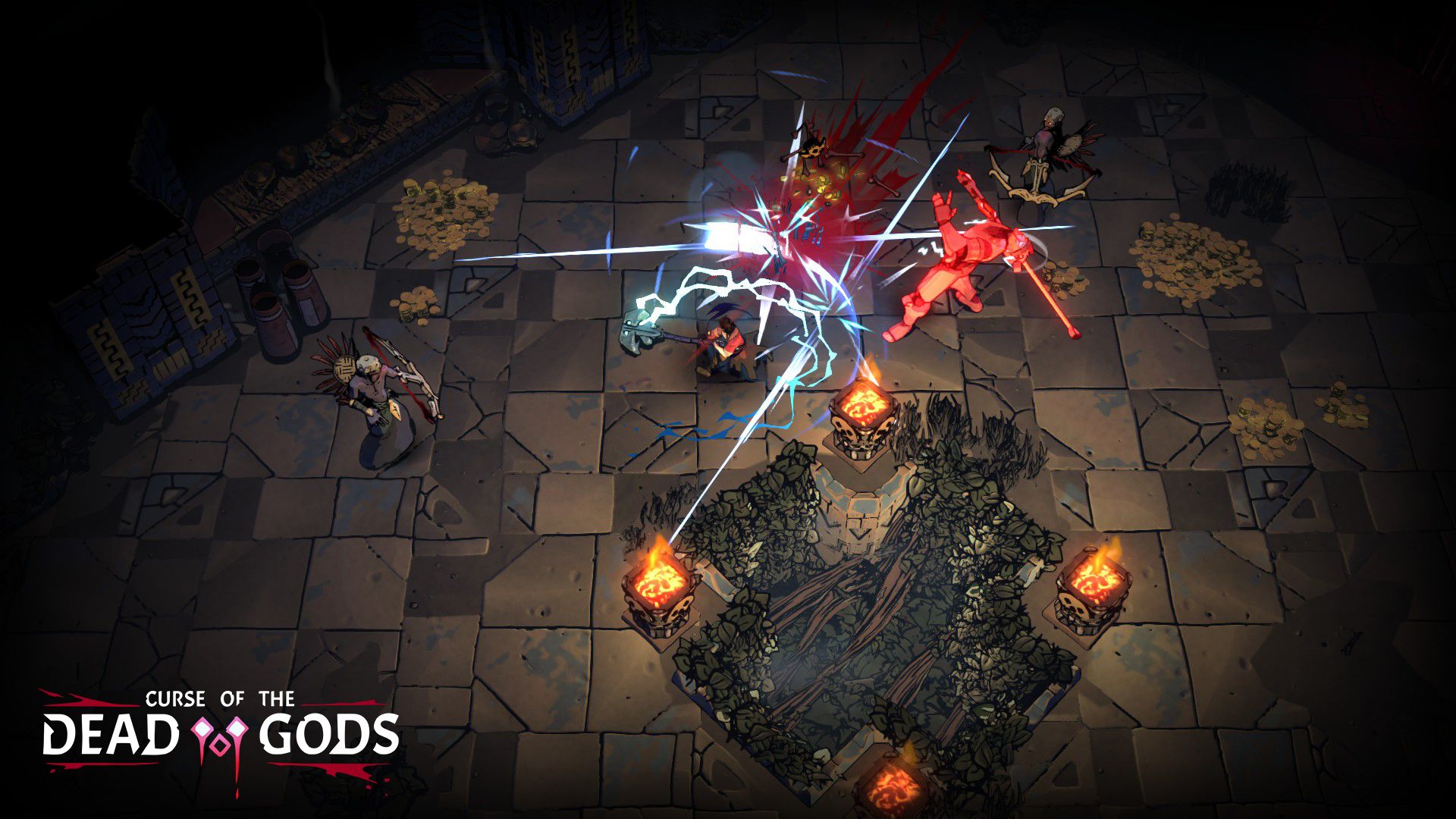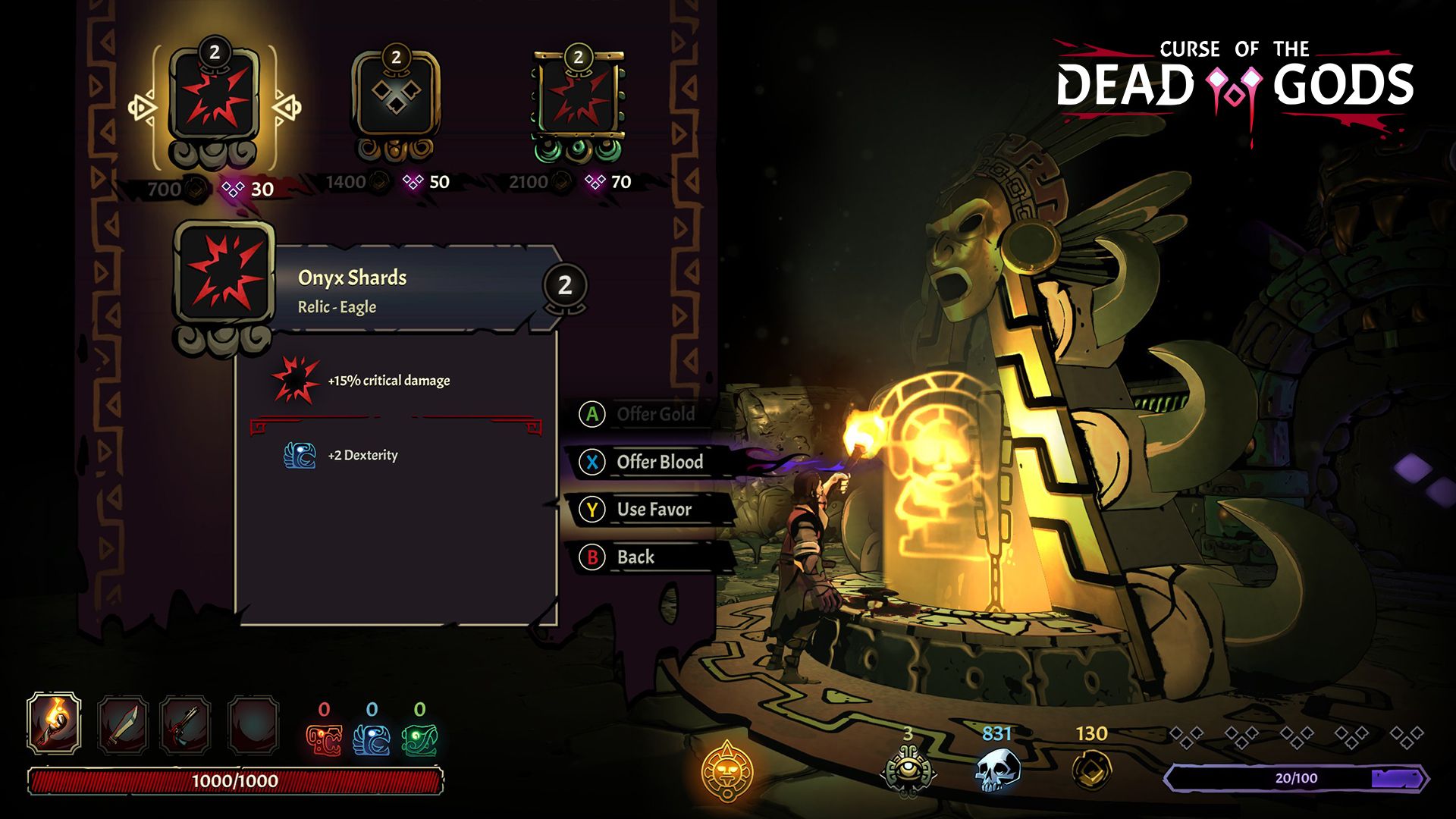By their very nature, roguelike games are meant to be challenging. Players are faced with an insurmountable task, but little by little their progress during each run will help make the impossible eventually seem possible. Passtech Games’ roguelike Curse of the Dead Gods streamlines a lot of that progress in smart ways, but it also tries to challenge the player the deeper they venture into the temple.
The idea behind Curse of the Dead Gods is fairly familiar territory for a roguelike. Players have to venture through four different segments of a temple, each punctuated by a boss fight at their conclusion, before eventually reaching a final confrontation. Along the way players will pick up new weapons (the player character has a primary melee weapon, a secondary weapon, and a heavy weapon), relics to give buffs, and gold to be spent on buying and upgrading those items. The further that players go, the stronger they should be thanks to those upgrades and relics, but so too do the enemies within the temple.
Unlike most roguelikes where each run is mostly random, Curse of the Dead Gods presents players with a roadmap for each segment. Players will see a map with various pathways that looks a lot like Slay the Spire’s map, showing what each room offers up as a reward. So, if players are in need of a weapon upgrade or more gold, they can target paths that lead in that direction.
Combat takes on a rhythm that is more deliberate than some of the other melee roguelikes out there. Players are given five pips of stamina to use for a variety of actions including dodge rolls, melee finishers at the end of a combo, ranged weapon use, and heavy weapon attacks. Going in swinging can work early on but players are better served when they are mindful of their stamina pips and learn enemy attack patterns. Parries require precise timing, but they also open up enemies to greater damage. It’s an engaging system that combines the thoughtfulness of a Dark Souls style combat with the variety of something like Hades.
Comparisons to Hades are unavoidable for Curse of the Dead Gods. The top-down viewpoint, some of the design touches, the loot system, and the overall approach as a melee-focused roguelike are going to remind players of the popular 2020 title. But the game still stands on its own thanks to its curse system, which serves to wear down the player the further they progress.
For each room that players complete, they will earn some amount of Corruption. This Corruption fills a meter that, when full, will put a curse on the player. Each of the curses seeks to make the game even more difficult than it already is, either by forcing players to change up their playstyle or just flat out punishing them. One of the more tolerable curses, for example, makes gold disappear after it has been sitting on the ground for a few seconds. While a more punishing one takes a bunch of gold from the player every time they complete a room. And if they don’t have any gold, they lose HP.
As the name implies, Curse of the Dead Gods is all about these curses and they are unavoidable in any run. Players can mitigate Corruption build-up or even get rid of some altogether, but they will eventually have a few curses on them at any given time. Only beating a boss wipes away a curse, but only one selected by the player. The curse system puts a unique twist on the run-based approach of a roguelike and while it is challenging, it adds to the chaos. For many roguelikes, players can lock into a groove and complete a run. Curses make everything unpredictable and turn deeper runs into potential nightmares.
But while the curses do make the run more difficult, it’s also fun to play into them. If players don’t have enough gold to purchase a powerful weapon or relic, they can take on corruption instead. The game also uses a light and dark mechanic (players can illuminate rooms by lighting torches) that buffs enemy damage in the shadows, but can also buff player damage with the right build. The game still feels overwhelming when it comes to the obstacles, but it will keep players on their toes.
Curse of the Dead Gods smartly gives players a few ways to feel like they have made progress even if they fail. For starters, players only unlock one room at a time. First, they unlock three different “starting segments” before they can unlock a selection of secondary segments. Each starter segment sends the player back to the temple entrance once the end boss is defeated, so players can’t instantly jump into the game and complete a run. Instead, they will slowly unlock and get a feel for the cadence of a run, starting with one segment, then two back-to-back, and so on. This approach also allows players to choose the bosses they want to face on their path towards the end, as each segment features a different theme, enemy selection, and boss.
Boss fights in Curse of the Dead Gods are frantic, frenetic affairs where players will need to balance dodging a variety of attacks and obstacles, while trying to get damage in any way they can. There is a general template for the boss fights in Curse of the Dead Gods that requires patience and quick reflexes, and completing each is both relieving and rewarding.
There is a lot about Curse of the Dead Gods that ticks the familiar boxes of a solid roguelike. A cool art style, engaging combat, some fun twists on the genre, and a sense of progression are key to making it engaging and addictive. Without a meaty story driving the experience, though, Curse of the Dead Gods relies heavily on its gameplay to keep players coming back for more. Motivation is ultimately going to be the driving factor for players. If they believe they can overcome seemingly insurmountable odds, Curse of the Dead Gods will feel like a rewarding experience once they complete a full run.
Curse of the Dead Gods is available now. Game Rant was provided a PC code for this review.




